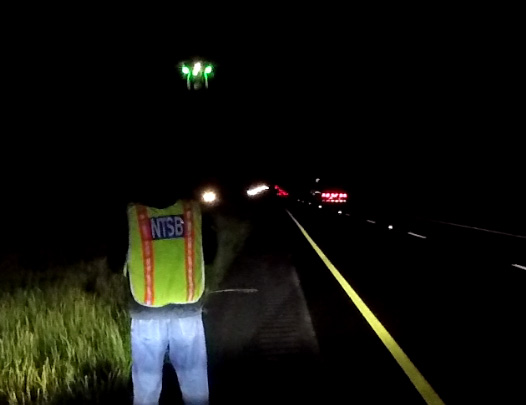NTSB deploys drone at night
NTSB investigators used a quadcopter to document what a bus driver would have seen in the moments before a fatal crash in Alabama, the agency’s first deployment of a drone at night.
The mission was the first since the safety agency secured FAA authorization to fly a drone at night, and was noted in a March 15 press release from the safety agency, which dispatched investigators to Alabama to the scene of an accident that claimed the life of bus driver Harry Caligone, the only person to die when the bus carrying a high school band from Florida to Texas veered off Interstate 10 and into a ravine in the predawn hours on March 13.
English said this type of data capture is as much art as science. While camera settings including ISO 800 and a shutter speed set to 1/25 are a good starting point at dusk, English has found that at night the ISO needs to be boosted to at least 1600, with an even slower shutter. (The Phantom 4 Pro has a mechanical shutter, which is part of what makes it suitable for this type of work.)

The FAA requires a waiver for unmanned aircraft operations at night, and one of the requirements is to make the unmanned aircraft visible to all aircraft within 3 statute miles. Successful applications to date have generally stipulated some type of high-intensity LED strobe. English said the NTSB chose one of the CREE LED strobes sold by Firehouse Technology, including in the waiver application data from night light visibility from the U.S. Coast Guard. The light is extremely bright, and small enough to be mounted on top of a Phantom, which has limited clearance between the aircraft body and propellers.
Mounting the strobe on top also has the advantage of directing a very bright light away from the camera. English said he adjusts the camera settings once the drone is in position until the image closely matches what is visible with the naked eye. The agency also uses drones during daylight hours to create accurate, digital maps of accident scenes, a more common application of the technology that is used in other industries.




